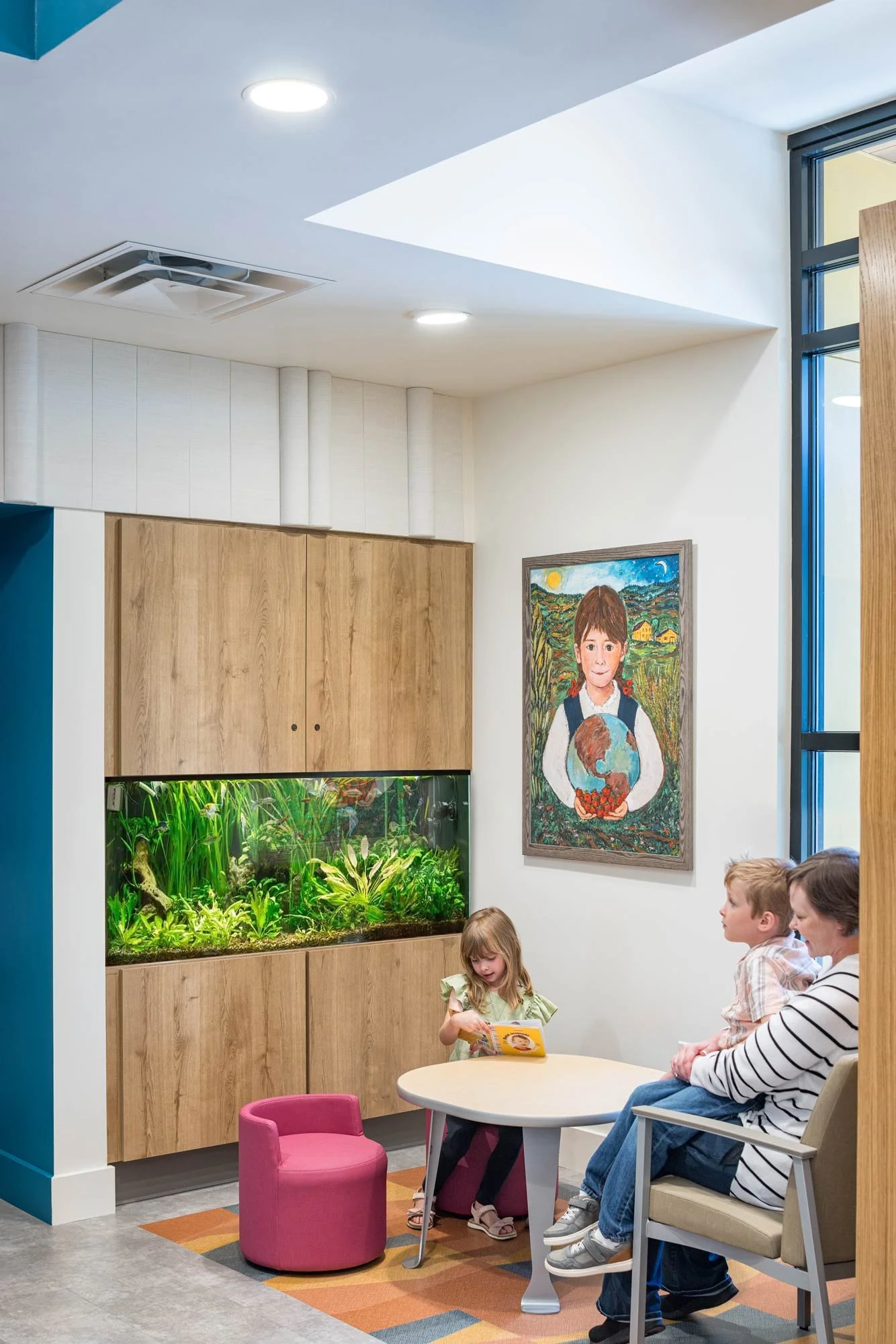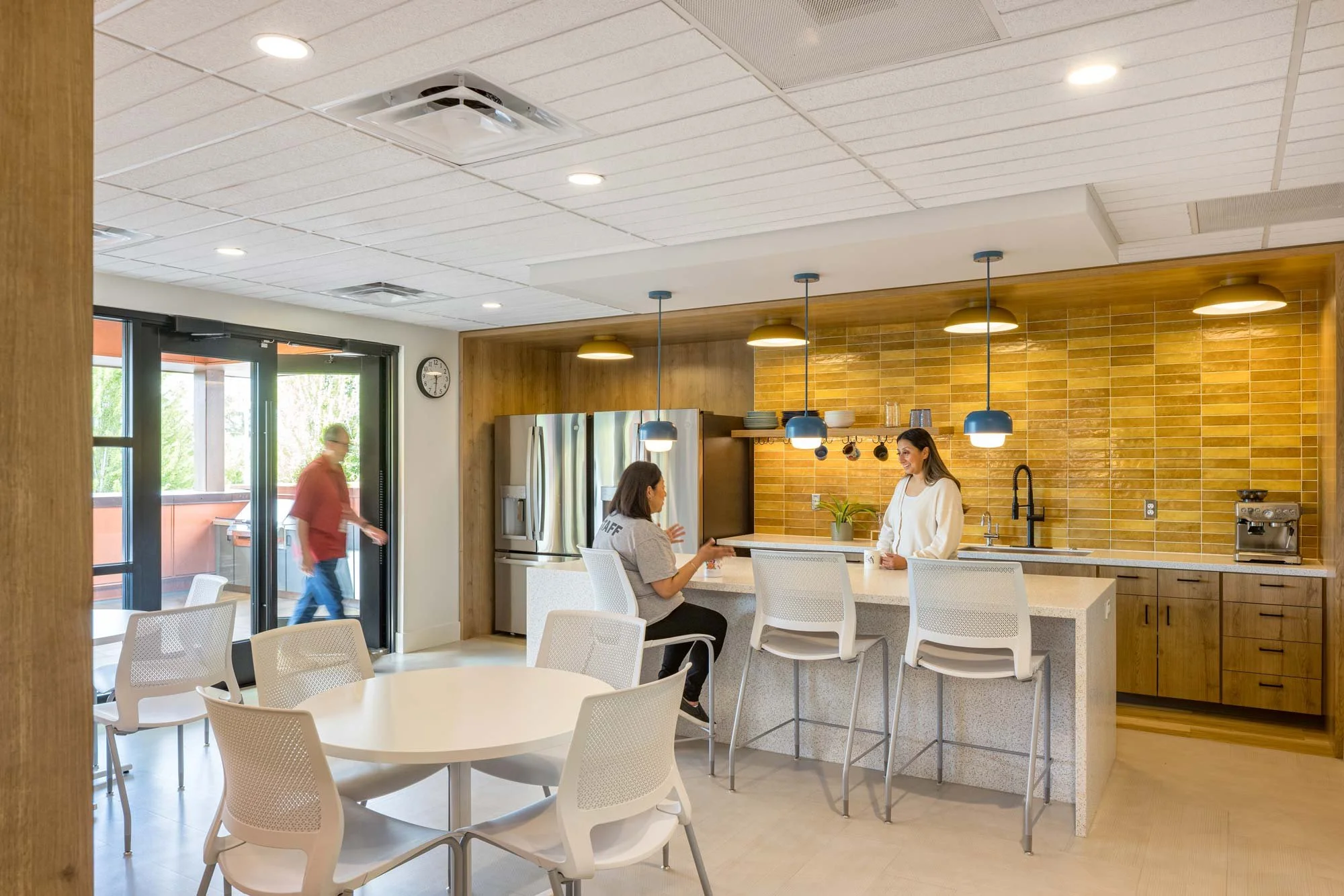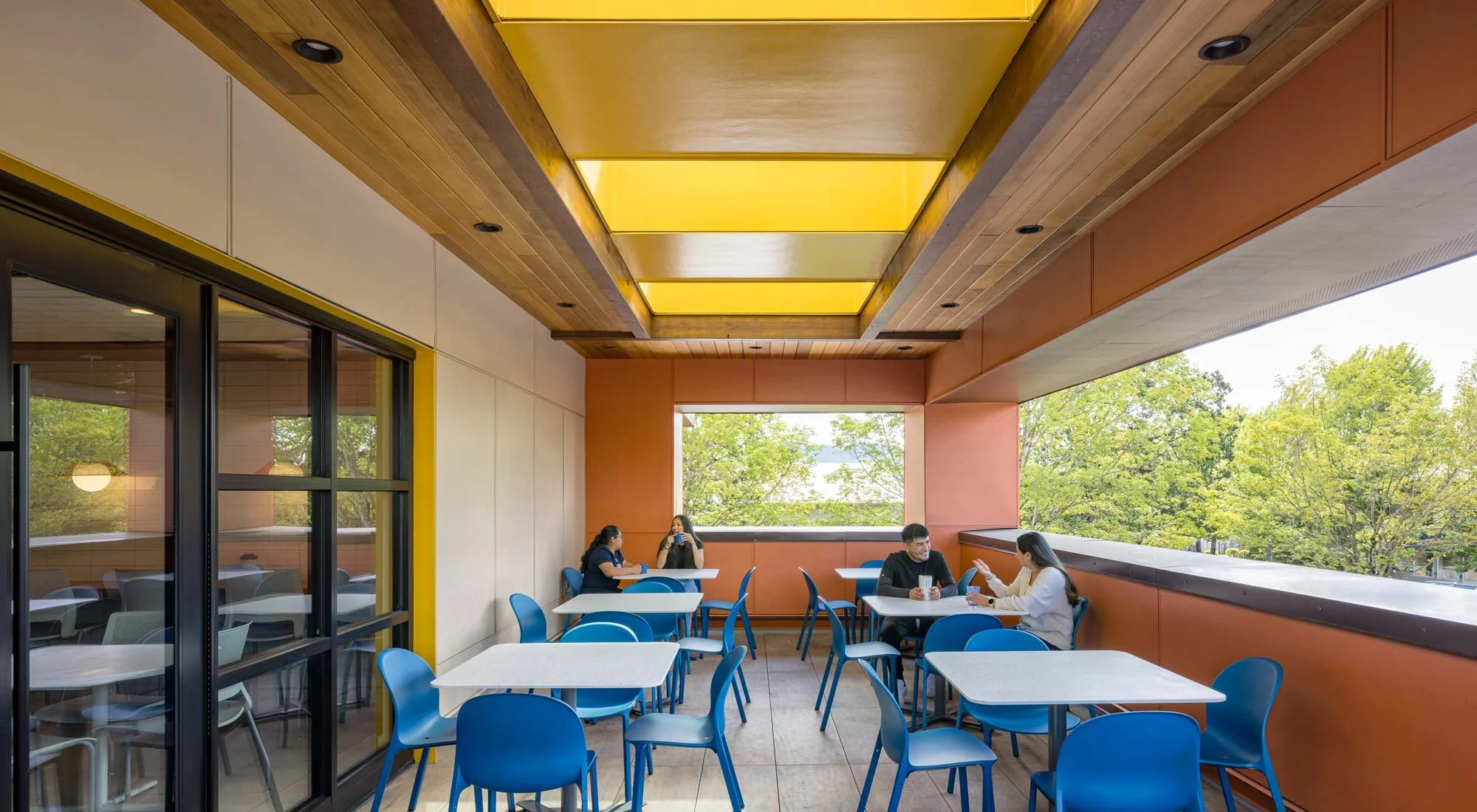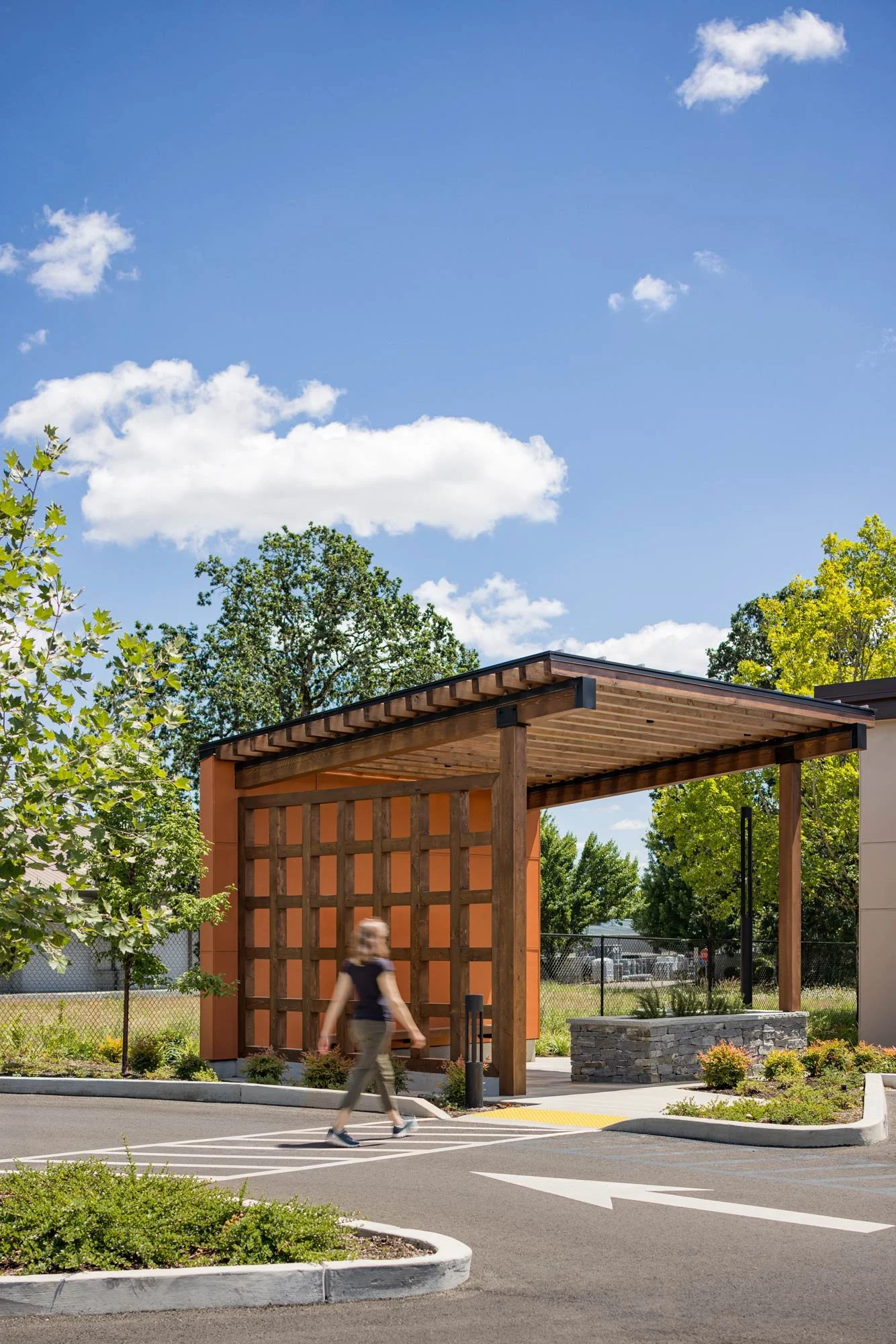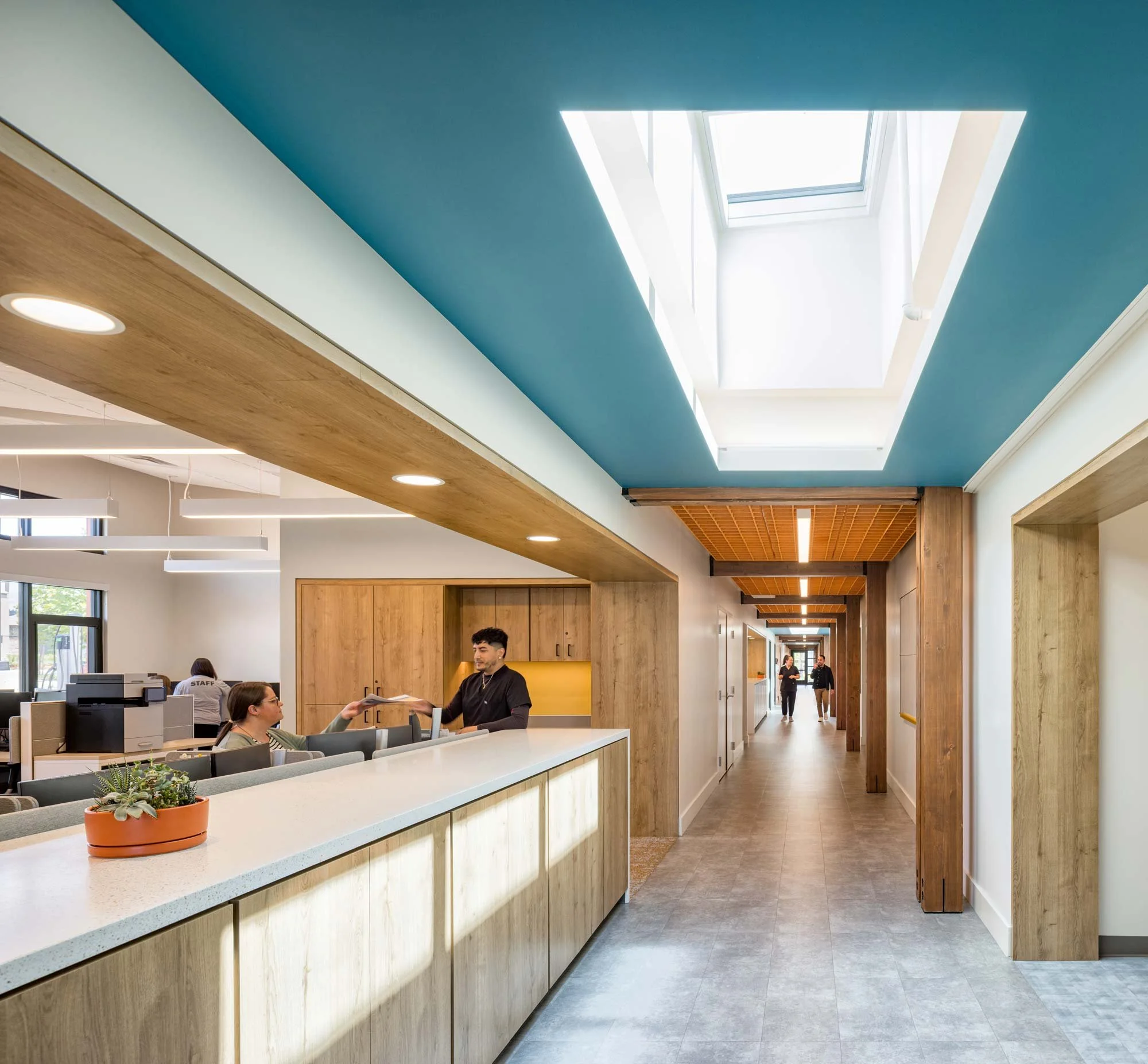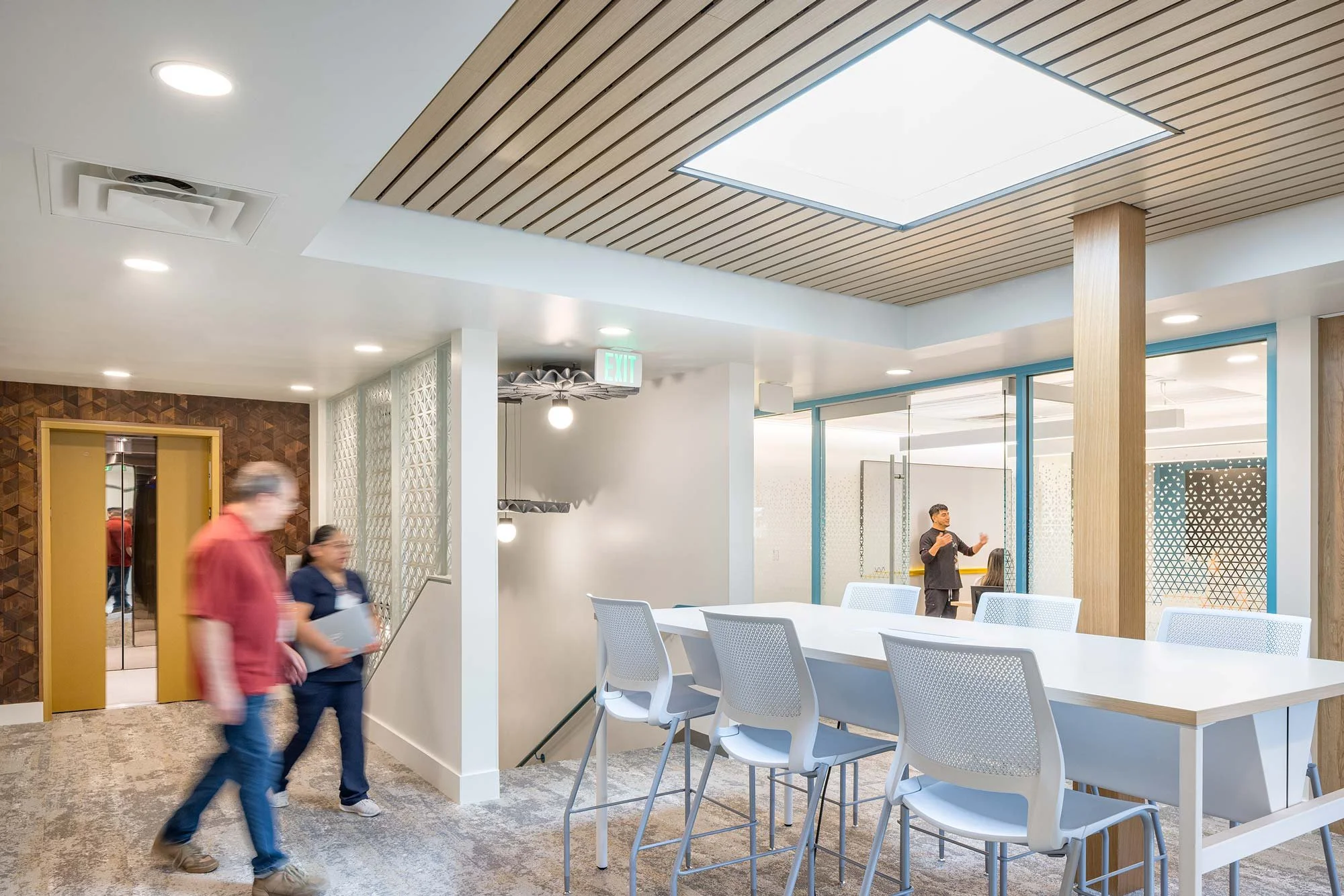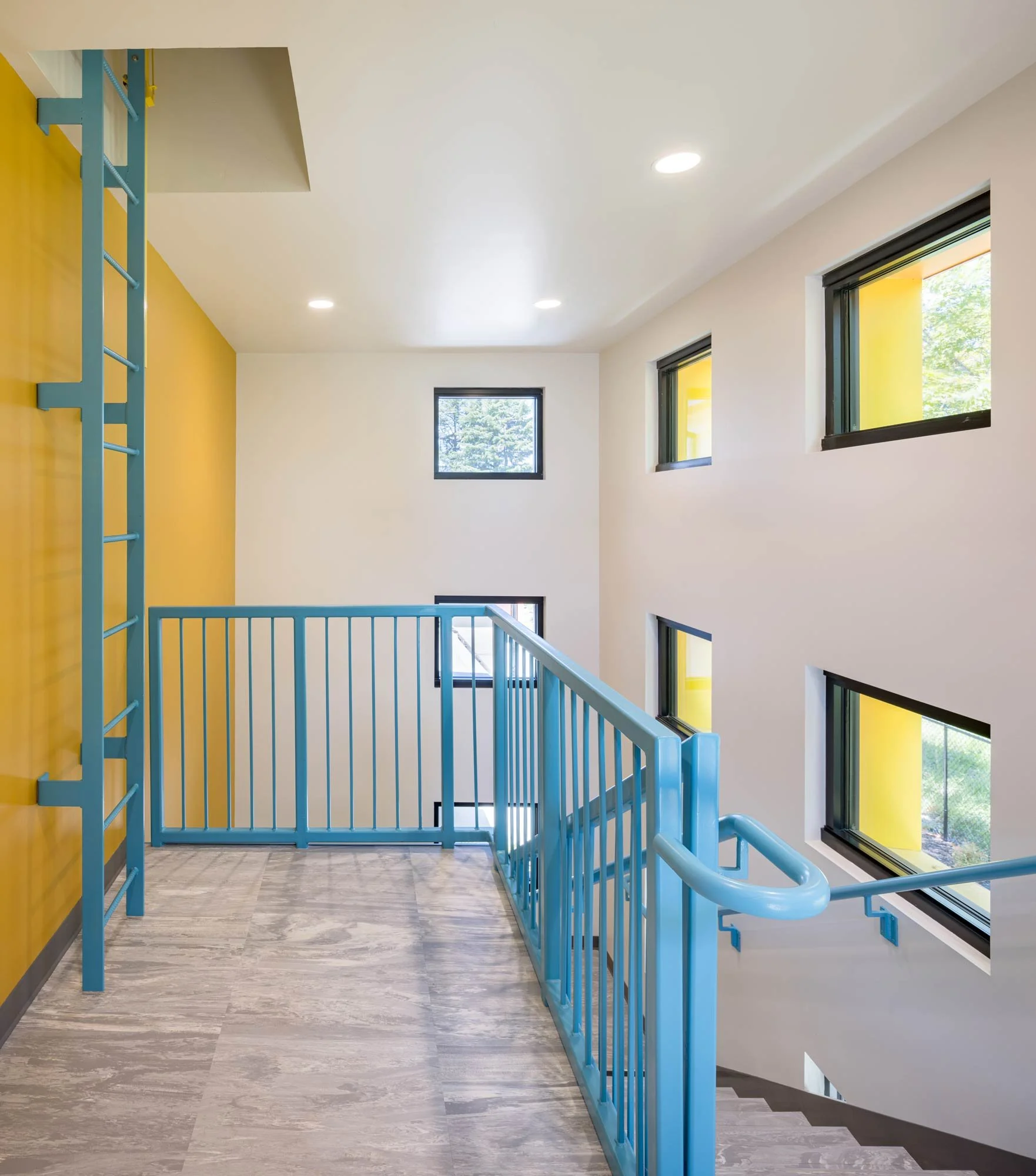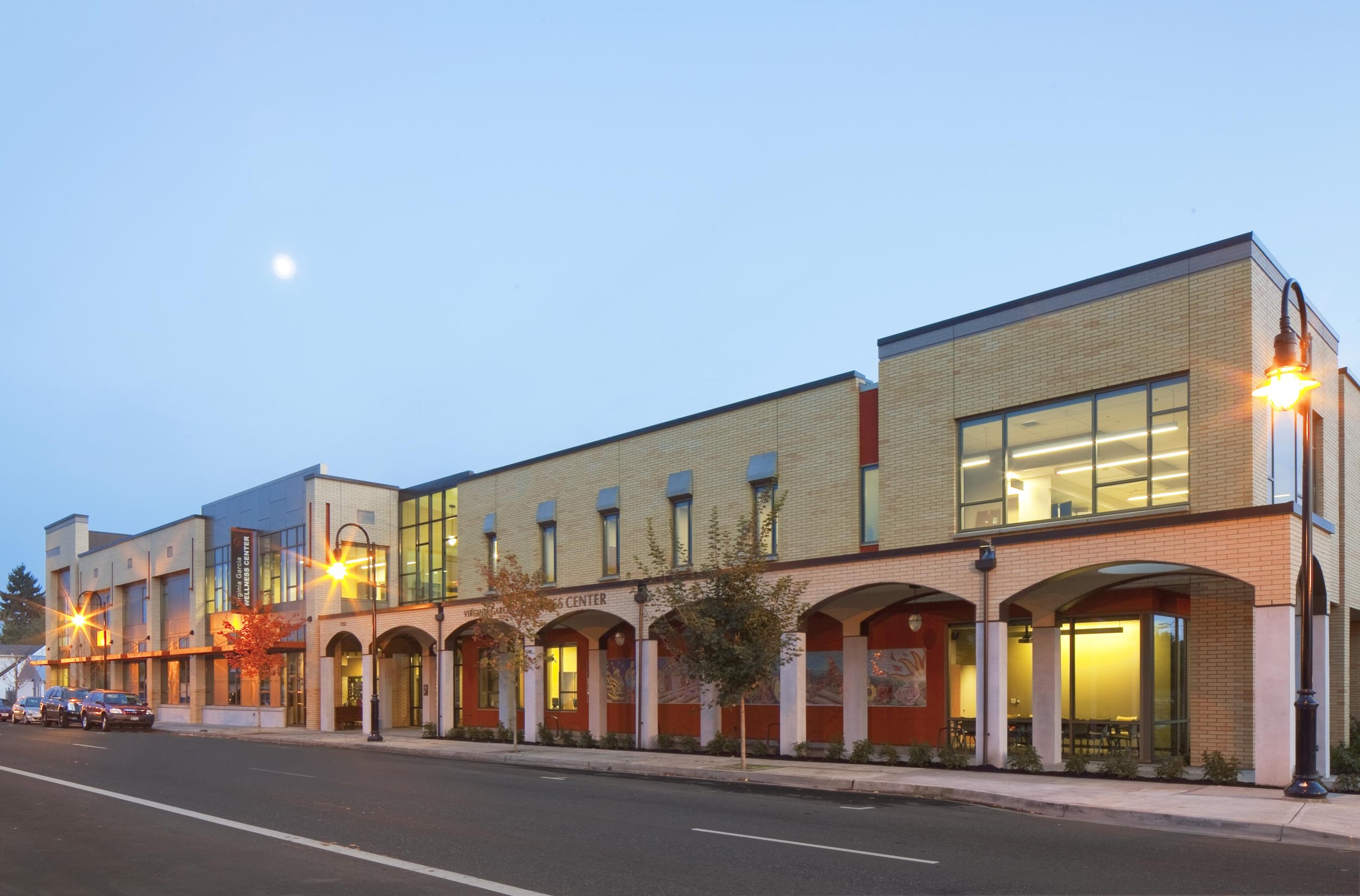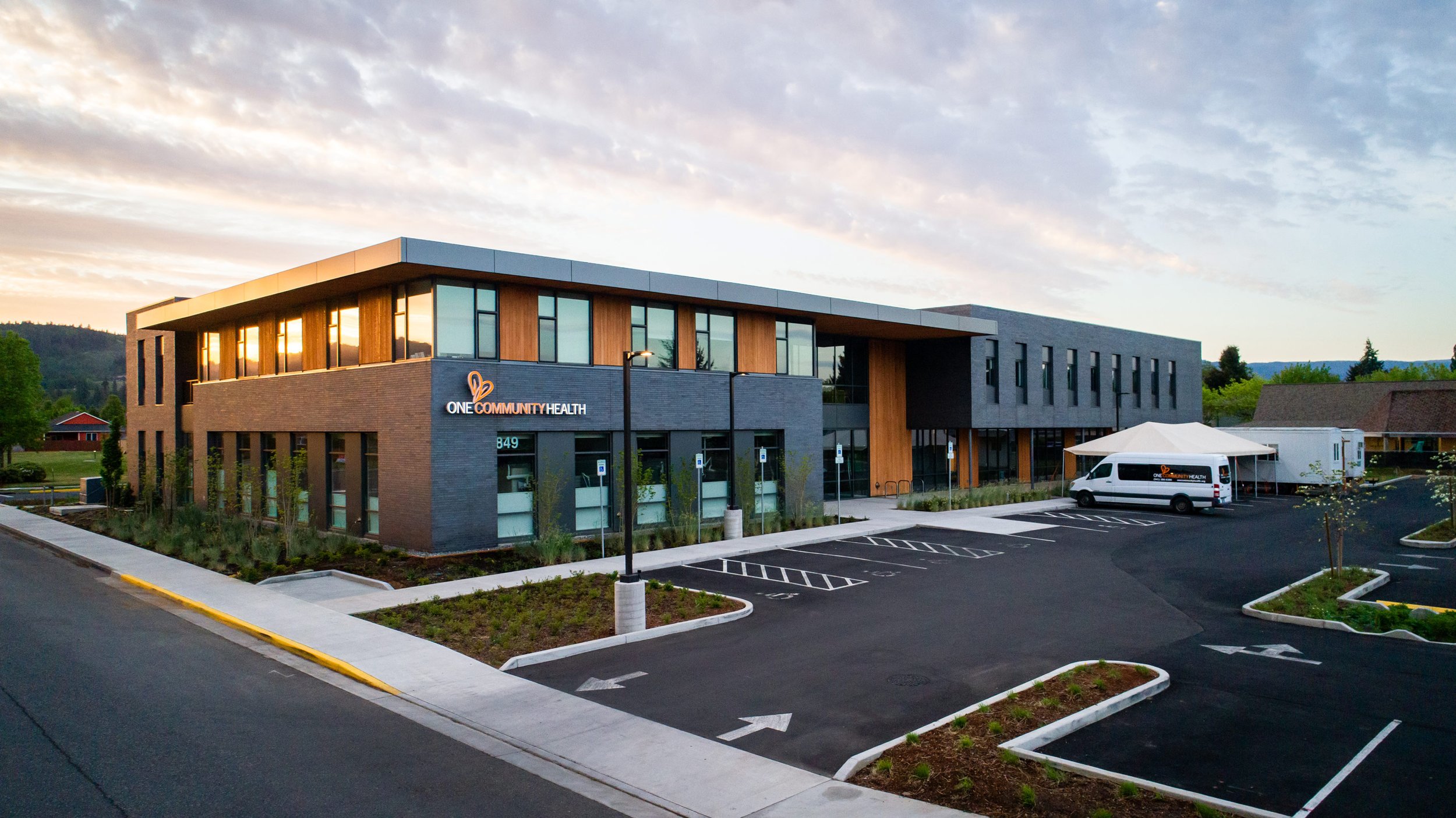Virginia Garcia Newberg Wellness Center
Culturally-informed health and wellness center
Virginia Garcia Memorial Health Center’s (VGMHC) Newberg Wellness Center project is a renovation and addition to an existing building, expanding the health, dental, and wellness services they’re able to provide to the community. Scott Edwards Architecture collaborated closely with VGMHC to develop a design that responds to staff and patient input, the program requirements, and supports the delivery of culturally appropriate healthcare to their primary demographic, the Latinx community. The design concept is inspired by a mid-century Mexican modern aesthetic, pairing simple forms in saturated color with traditional materials like stone, stucco, and heavy timber. The experience of patients and staff is prioritized in functionality and flexibility, ample natural light and access to outdoor spaces, a comfortable interior guided by trauma-informed design principles, and sustainability strategies, all measures that promote well-being in the healthcare environment.
Client
Virginia Garcia Memorial Health Center
Location
Newberg, OR
Size
22,733 sf
Year
2025
The lobby offers a range of seating types, including a children-focused waiting area. The dental clinic and medical clinic share the lobby, streamlining operations and integrating Virginia Garcia’s holistic approach to healthcare in the design.
SEA enjoys a longstanding partnership with VGMHC reaching back to the firm’s founding—our very first project was a new Virginia Garcia dental clinic. The Newberg Wellness Center, as with their other locations, is mission-driven and emphasizes those they serve in both program and design. This renovation and addition transformed the existing 1990s building into a modern, vibrant new facility inside and out. The program includes a medical office with exam, treatment, and consult rooms, a dental office with operatories and x-ray spaces, a pharmacy, lab services, a multi-purpose wellness center, and administrative support areas. The clinic remained operational during construction, adding complexity and cost but demonstrating VGMHC’s commitment to patients having access to care.
A before-and-after showing the transformation of the health center’s exterior.
The design is informed by mid-century Mexican modern architects Luis Barragan and Ricardo Legorreta, a direct tie to Latinx culture as this is the community most closely connected to the wellness center. The main South elevation of the building is composed of a collection of colored rectilinear masses ranging from tan for the base massing block to a rich rust color for the pharmacy, wellness center and stair tower masses, and a vibrant gold for the main entry. The collection of forms is connected by an outdoor arcade running around the building's West, South, and East sides. The arcade is punctuated by gridded breezeblock screens that act as filters for the sun and provide colorful accents. Additional design elements like timber grids, heavy timber frames, and deep punched openings are also inspired by mid-century modern Mexican design.
The staff breakroom offers a space for respite and connection with colleagues. The indoor area flows to an outdoor covered balcony with seating and a barbecue, a design that supports everyday activities alongside larger staff events.
Clear wayfinding and welcoming walking paths guide patients from the back parking lot to the front entry. Landscaping, lighting, and covered structures and walkways create a comfortable arrival.
The outdoor spaces along the arcade include a community garden with raised beds for fresh herbs and vegetables, an outdoor plaza with tables and seating for lunch breaks, stopping points for patients, and a small pavilion for bike parking with a covered area housing bicycle repair tools available to the community. The community garden supports Virginia Garcia’s holistic approach to healthcare by increasing access to healthy ingredients for the cooking classes that they provide to their patients. The project incorporates a small landscaped child play area with raised berms and seating, and the site design includes a walking exercise trail with intermittent exercise equipment. These elements promote the client’s goal to provide a safe, engaged, and welcoming environment.
The building’s new addition is organized along an interior circulation path referred to as “The Street”. This main spine has exposed structural glulam columns, orange felt acoustic grids suspended from the ceiling, and large modular skylights at each circulation intersection. Staff areas include open office rooms, breakout spaces, and conference rooms, all of which support integrated care delivery and promote a collaborative working environment.
The wellness center’s interior design is driven by four principles—spaces must be patient-centered, collaborative, empowering, and inviting. The concept of trauma-informed design guides the approach to materials and the flow between spaces and a contemporary color palette emphasizes saturation and vibrancy to encourage healing. Architecturally-refined interior elements meet bold and expressive floor and ceiling materials that serve as wayfinding throughout the building and the space planning allows areas for artwork to be incorporated.
Make it stand out
A specialty dental room is designed to serve a wide range of patients, from bariatric to people using wheelchairs. Virginia Garcia does not have this resource at other clinics, so by adding it to this project, the service expands accessibility and inclusivity for patients across their network.
Exam rooms are comfortable for patients and use durable, maintainable materials in support of operations and longevity. Dental is fully integrated into the whole healthcare approach to care delivery. Dental patient check-in and staff are integrated with medical, signaling the center’s holistic approach. The Newberg Wellness Center also operates a mobile dental care bus, allowing staff to meet patients where they are. As part of the programming, the design incorporates home desks for mobile staff while they aren’t on the road, facilitating a flexible, connected staff environment.
The wellness room is a community-focused space that can easily transform between a teaching kitchen, exercise classes, vaccine clinic, all-staff meetings, small conference rooms, community presentations, and more. This is accomplished through durable finishes that support all the desired potential uses, an operable partition to separate spaces into smaller spaces, attention to acoustical properties of the room to allow for loud music to be played without disrupting adjacent spaces, and storage for flexing uses.
Unexpected moments, like the staff stairwell pictured here, encourage delight in the design. Vibrancy and joy are prioritized and infused throughout.
Sustainability is integrated into the Newberg Wellness Center’s design in numerous ways. By deciding to rehabilitate an existing building and retain a large amount of the existing site infrastructure instead of building new, the inherent carbon footprint is lowered. The addition adds square footage to the North of the building and has a 6,000 sf roof sloped slightly to the South, designed for solar panels. The roof can support roughly 80 kw of solar, enough to produce approximately 86,000 kWh per year. The project was awarded an Energy Trust of Oregon incentive and a Portland General Electric Renewable Development Fund Grant to incorporate a solar array on the addition’s roof and the expected pay-back period for the cost is a little over 4 years. The project also includes daylighting strategies, enhanced indoor air quality measures, sustainable product selections, enhanced exterior envelope performance, and a whole wellness approach that evaluates environmental, community, and financial impact equally in the design.
Acknowledgements
SEA Team
Margaret Wilson
Sid Scott
Kathy Johnson
Fabio Arias
Tim Gordon
Trent Jorgensen
McKenzie Baird
David Morris
Quinn Lindstrom
Project Team
HHPR
WDY
PLACE
Interface
Photography Credits
Josh Partee


